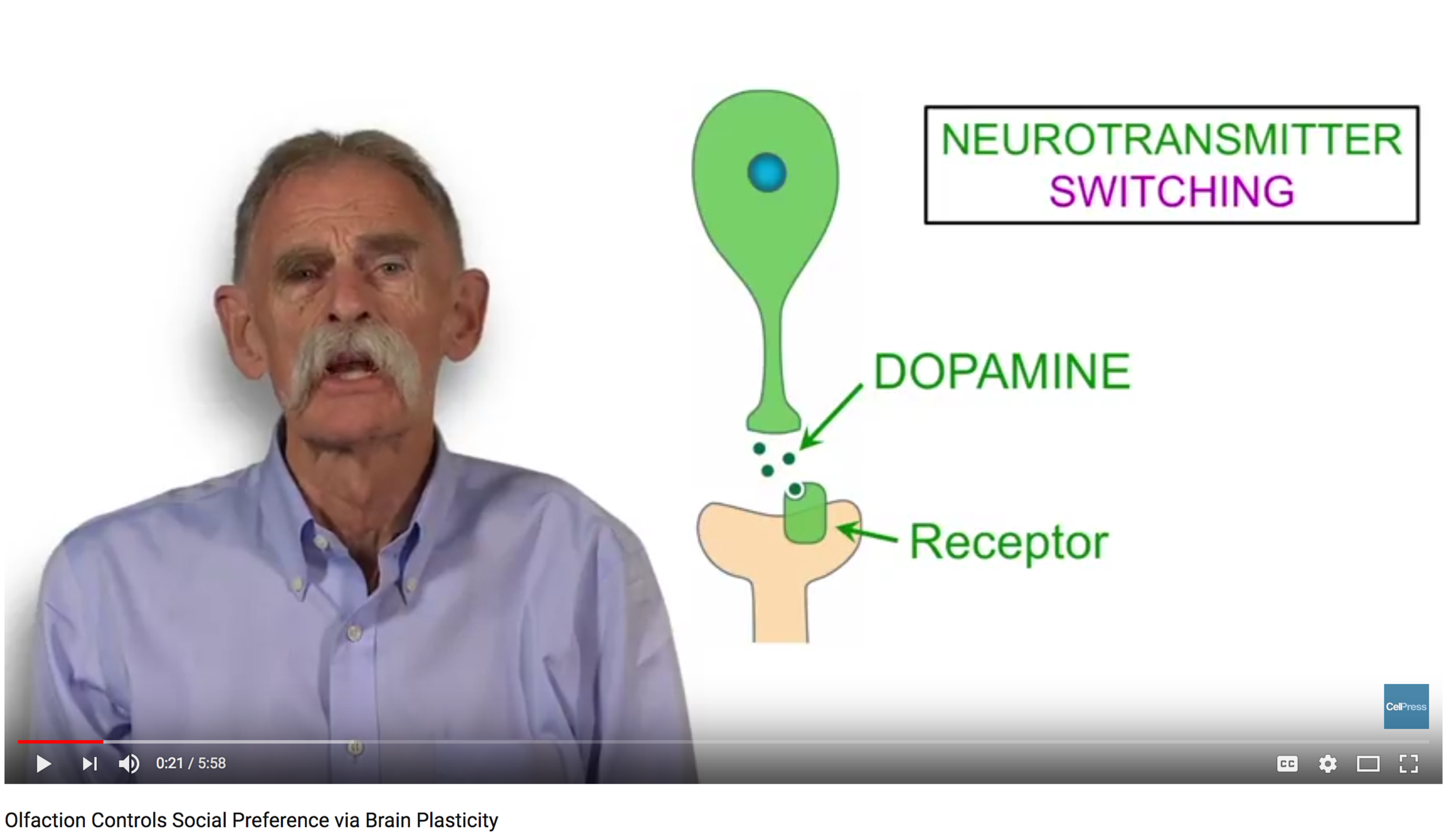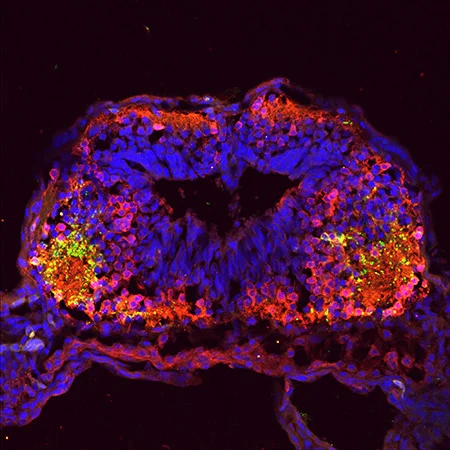Mnemonic microRNAs help make memories
/From: In Focus (Sep 19, 2011)
Researchers find that two microRNAs prime the brain to learn. Learning and memory depend on the brain's plasticity, its ability to rewire itself. Lippi et al. reveal that two microRNAs (miRNAs) help the brain maintain this flexibility by dismantling unneeded synapses between neurons (1).
FOCAL POINT Kenneth Young (left), Giordano Lippi (center), and colleagues (not pictured) tracked down two miRNAs that induce synaptic plasticity in the brain. A control hippocampal dendrite (top right) possesses filopodia and several kinds of spines, including mushroom-shaped spines. But a dendrite that overproduces miR-29a (bottom right) displays fewer mushroom-shaped spines and more spindly filopodia.
When a rat memorizes the route through a maze or a singer learns the lyrics to a song, the neural changes in their brains typically include growth or modification of dendritic spines, the antennae that receive impulses from axons of neighboring neurons. Accumulating evidence suggests that miRNAs have a big influence on dendritic spines. They can, for instance, fine-tune protein production within a spine (2). Some research also indicates that miRNAs control the formation, structure, and function of dendritic spines (3, 4). However, researchers don't fully understand how miRNAs affect neural plasticity.
Lippi et al. wanted to identify miRNAs that might shape synapses, so they dosed mice with nicotine, cocaine, or amphetamine, all of which promote brain rewiring. The team then analyzed different brain regions to pinpoint miRNAs whose levels rose after treatment with the drugs. Quantities of 32 miRNAs climbed in most brain regions, the researchers found. To ascertain whether these miRNAs promote brain plasticity, the researchers measured their levels in cultured neurons that were just beginning to synapse with each other. They detected surges in two pairs of related miRNAs: miR-29a/miR-29b and miR-182/miR-183. Lippi et al. also found that increased firing by neurons boosted the levels of these miRNAs, suggesting that synaptic activity regulates the expression of the miRNAs.
But are the miRNAs molding synaptic architecture? To find out, the researchers engineered cultured hippocampal neurons to overproduce each of the four miRNAs. Dendritic spines start out as simple protrusions known as filopodia, and they often mature into more permanent, mushroom-shaped structures. In control neurons, mushroom-shaped dendritic spines predominated, the scientists found. But neurons that carried extra miR-29a or miR-29b sported fewer mushroom-shaped spines and more filopodia. By contrast, miR-182 and miR-183 had little effect on dendritic spines. These results suggest that miR-29a and miR-29b regulate the formation and maintenance of synapses, returning them to a less specialized state.
“We think that these miRNAs maintain plasticity in neurons”
The researchers uncovered the mechanism. Using RNAi, Lippi et al. depleted nine likely targets of the miRNAs from cultured neurons. Knocking down one of the proteins, Arpc3, produced the same effects on dendritic spines as boosting levels of miR-29a and miR-29b. Arpc3 is part of the ARP2/3 actin-nucleation complex, which spurs actin to branch, a key step in the maturation of dendritic spines. Further experiments showed that miR-29a and miR-29b slash Arpc3 levels.
Lippi et al. also found evidence that the miRNAs promote learning in vivo. The team measured miRNA levels in mice that had undergone fear conditioning, in which the animals learn to associate a tone with electric shocks to their feet. Amounts of miR-29a and miR-29b in the hippocampus shot up after the training, and levels of Arpc3 fell.
Instead of building new connections between neurons, miR-29a and miR-29b appear to thwart them, preventing dendritic spines from maturing by blocking the ARP2/3 complex that spurs actin polymerization. “We think that these miRNAs maintain plasticity in neurons,” says first author Giordano Lippi. The molecules “could be part of a mechanism by which spines are eliminated when they aren't necessary anymore,” he says. By pruning nonessential spines, the miRNAs might ensure that neurons can extend new spines when they are required.
How important these miRNAs are for editing neural connections in the brain remains to be seen. Drug addiction can lead to construction of new synapses, so one question is whether drugs inhibit these miRNAs to allow neural connections to form and consolidate. The miRNAs could also be important in conditions in which memory and learning falter, such as Alzheimer's disease.








